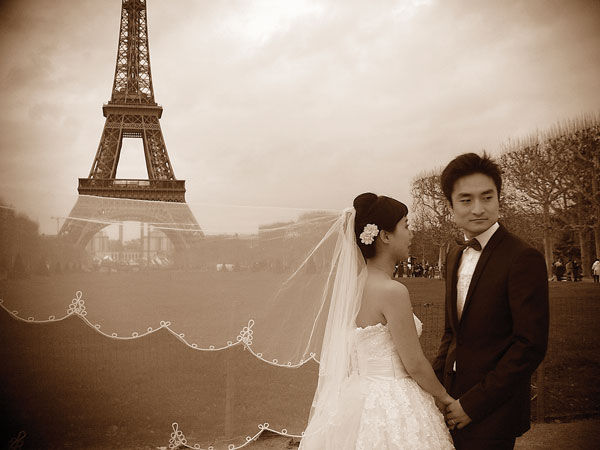Toy camera connects photographer’s visions
Published April 13, 2016
When her husband passed away in 2011 after a long illness, Jewish photographer and Webster University professor emeritus Susan Stang turned to her art to revive her spirit and creativity. This revival ultimately became the exhibition “reAPPEARANCES,” on view at the Sheldon through April 30, and a book of photographs with the same title.
“As teachers, we do exercises with students to get them out of their ruts,” Stang said. “Acquiring the JOCO camera [a digital toy camera with a plastic lens] was a way to get myself out of my rut. I loved everything about it.”
In 2012, she planned a visit to Italy and needed to jumpstart her work, but she didn’t want the hassle of traveling with film. A friend happened to find the JOCO online. Stang thought the camera would be fun to use, and it required only a memory card.
ADVERTISEMENT
Stang has been interested in toy cameras for nearly as long as she’s been a photographer.
“In the 1970s and ’80s, I liked to work with funny little cameras like the Brownie and Holga,” she said. “I also collect them. Though I can’t control the focus, and the exposure range is small, I like the challenge of working with limitations.”
Near the beginning of her trip, Stang took a picture with the Leaning Tower of Pisa in the background. In the foreground, a woman in a white dress holds up her hands as if she’s propping up the tower for an unseen photographer taking her picture. This image, titled “Campo Santo, Pisa 2012,” was the first photograph Stang took that would appear in her book.
Six months after her Italy trip, Stang traveled to Paris to visit her sister. One day. she went to the Eiffel Tower to photograph it as a companion piece to the Leaning Tower. She saw a Japanese wedding party with a photographer. As a friend lifted the bride’s veil and let it drop, Stang captured the moment and created the piece titled “Champ de Mars, Paris 2012,” also an image in the book.
ADVERTISEMENT
“I didn’t have a clear concept of what I wanted to do at the time,” she said. “The theme for these two pieces was originally the towers in each, but this was also the beginning of my work with the JOCO and seeing many echoes among all my photos.
“I was chasing serendipity, hunting for good fortune.”
Stang’s book “reAPPEARANCES” contains many layers of echoes. For example, “Campo Santo, Pisa” and “Champ de Mars, Paris” both depict women in white dresses in front of iconic towers. Neither woman looks at Stang’s camera, although each poses for photographs taken by others. They stand with the towers on their left and they look to the right, at a point beyond the frame.
“My show and my book are about appearance and reappearance, the way things cohere,” Stang said. “The associations between photographs are very abstract, so I like when people tell me they kept looking at the images and saw different levels at which the images connect.”
Stang also brought the JOCO to Jerusalem and carried it all over the United States. She narrowed her photographs to 52 and in early 2015 decided to publish a book of them.
“Publishers were hardly doing photography books anymore, so I did mine on Kickstarter,” she said.
Stang offered each donor a copy of her book in exchange for a donation. After her campaign reached its funding goal last fall, the book went to press in a numbered edition of 500.
The artist received her bachelor’s and master’s degrees in fine art from the Rhode Island School of Design. As an undergraduate, she set out to major in graphic design. But when she took Photography 101, taught by noted photographer Harry Callahan, she realized it was the right medium for her.
“I love the heightened reality and the look of the world when it stops,” Stang said. “I liked being in the darkroom. It all felt right.
“I’m interested in how time moves through one’s life and through the years of the world. Time is the raw material of photographs.”
While Judaism didn’t directly influence her most recent projects, it has resonated throughout her career. She spent six months as artist-in-residence at the Bezalel Academy of Arts and Design in Jerusalem and visited Israel a number of times.
“There’s a deeper connection between things in the world,” Stang said.
















